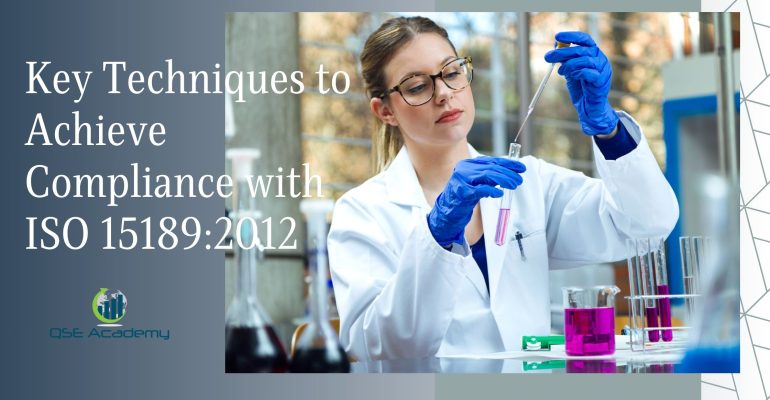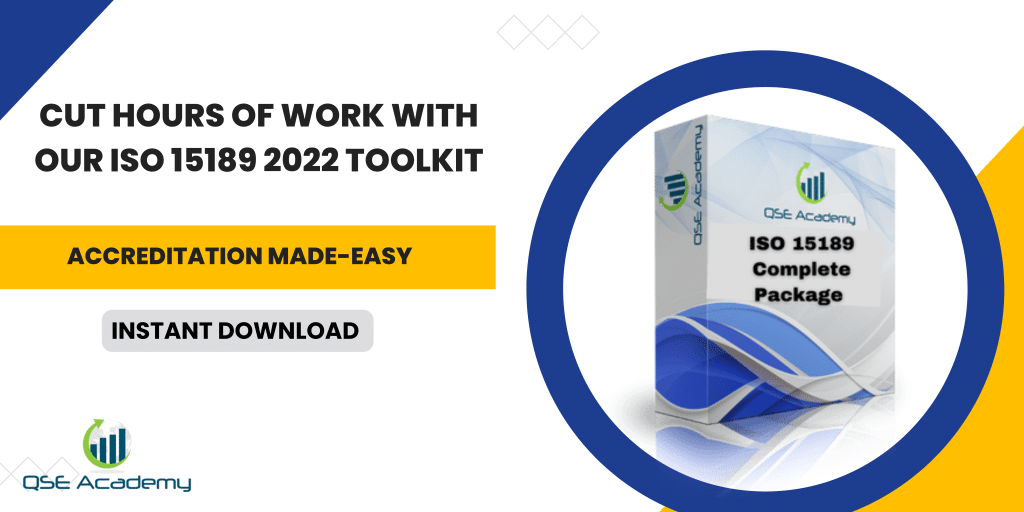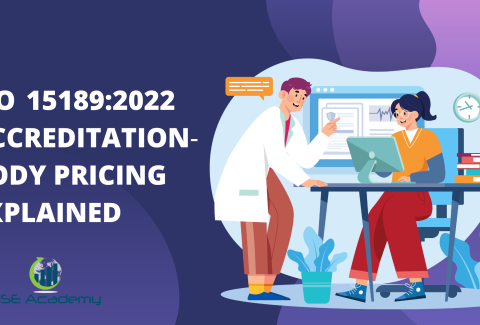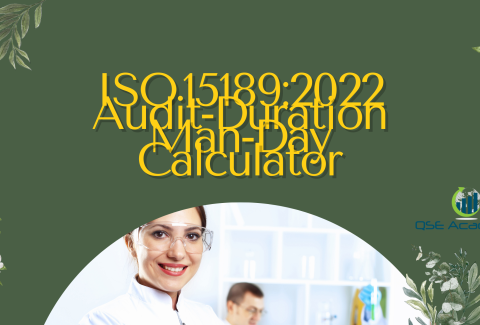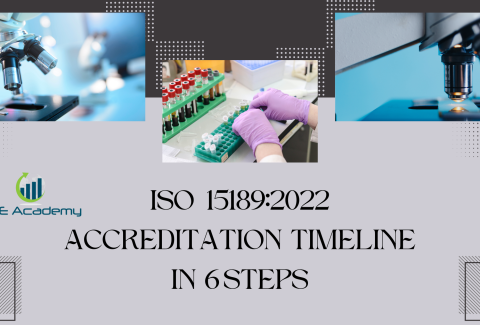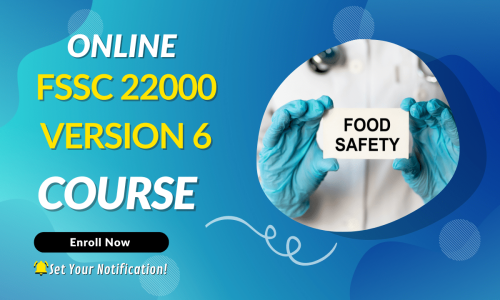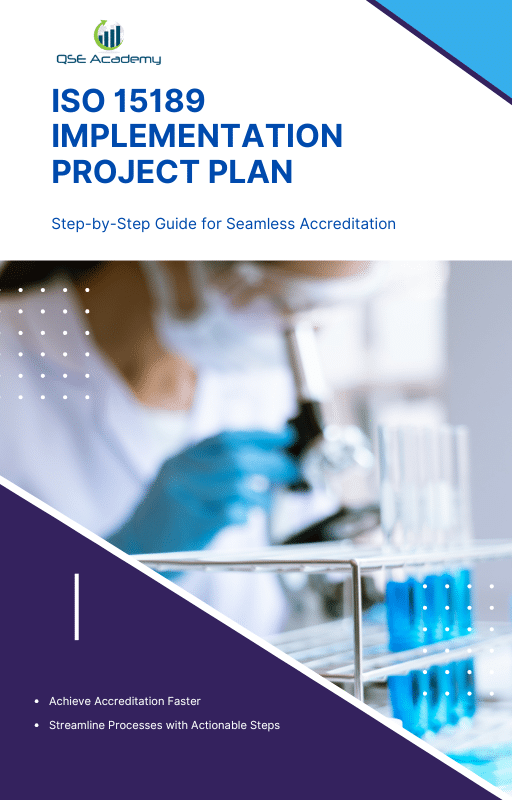Key Techniques to Achieve Compliance with ISO 15189:2012
Last Updated on October 22, 2025 by Hafsa J.
In the meticulous arena of medical laboratories, precision is non-negotiable. ISO 15189:2012 sets the gold standard, mandating a quality and competence framework for these critical institutions. To grasp the gravity of the task, one must delve into the heart of this international standard. Introducing the meticulous journey towards absolute compliance with ISO 15189:2012, this article maps out the essential techniques and actionable steps laboratories must embrace. Join us as we navigate through the detailed strategies that can transform a medical laboratory into a paragon of quality and reliability.
Introduction
ISO 15189:2012 is an international standard that specifies requirements for quality and competence in medical laboratories. It is a crucial certification for laboratories seeking to ensure the reliability of their examination procedures and accuracy of test results. This standard is significant as it encapsulates both the technical competence and the quality management system requirements that are necessary for a laboratory to consistently deliver technically valid test or calibration results.
Achieving compliance with ISO 15189:2012 reflects a laboratory’s commitment to excellence and continuous improvement in providing a quality service. It assures healthcare providers and patients of the diagnostic accuracy, thus contributing to better healthcare decisions.
The standard has evolved to incorporate the latest best practices in laboratory medicine. It harmonizes with ISO/IEC 17025 while focusing specifically on the unique requirements of medical laboratories. Compliance ensures a well-rounded assessment of both managerial and technical operations, encompassing factors such as laboratory equipment, reagents, and the competence of staff.
| Requirement Focus | Description |
| Quality Management | Emphasizes quality assurance and continual improvement |
| Technical Competence | Ensures staff, equipment, and methodologies are apt |
ISO 15189:2012’s primary goal is to provide a framework that supports medical laboratories in developing their quality management systems and maintaining their technical competence, ultimately fostering confidence in the healthcare services they provide.
Understanding ISO 15189:2012 Requirements
ISO 15189:2012 specifies requirements for quality and competence in medical laboratories. Its application ensures quality service, reliability in laboratory outputs, and promotes enhanced patient care outcomes. By adhering to the principles of ISO 15189:2012, laboratories demonstrate their commitment to quality management, technical competence, and the ability to produce precise and accurate test results. This international standard contributes to the continual improvement and preventive actions that are vital for patient safety and healthcare quality.
Designed to be applicable to a variety of medical laboratories, including clinical laboratories, calibration laboratories, blood banks, and those handling genetic material or medical devices, ISO 15189:2012 addresses the competence of testing, operational quality requirements, and the management of resources. Key stakeholders such as laboratory personnel, accreditation bodies, conformity assessment bodies, and regulatory authorities are engaged in ensuring compliance and quality.
Unlike ISO/IEC 17025, which is geared toward general testing and calibration laboratories, ISO 15189 is tailored specifically for medical laboratory environments. It incorporates specific requirements for quality and competence that reflect the complexity and unique needs of medical diagnostics, including examination procedures, diagnostic sensitivity and specificity, as well as storage facilities.
Requirements for Quality and Competence:
- Competence of testing staff
- Equipment calibration and maintenance
- Examination procedures
- Corrective and preventive actions
- Internal audits
- External quality assessment
Stakeholders:
- Medical laboratory personnel
- Accreditation bodies
- Conformity assessment bodies
- Regulatory authorities
Preparing for Compliance
To embark on the journey towards achieving ISO 15189:2012 compliance – a marker of quality service in medical laboratories – it is essential to lay a strong foundation during the preparation phase. Two critical early steps are the conduction of a gap analysis and securing leadership support.
Gap Analysis Gap analysis is a crucial initial step that identifies the current state versus the ISO 15189 requirements for quality and competence of testing in clinical laboratories. It assesses areas such as laboratory equipment management, calibration laboratories workflows, and examination procedures. The findings then shape a comprehensive action plan tailored to bridge identified gaps.
Leadership Commitment The commitment and support of top management are vital. It serves as the backbone of the implementation process, ensuring that the principles of ISO 15189 are communicated and understood across all organizational levels. Defining clear roles and responsibilities ensures sustained engagement and accountability.
Resource Allocation Attention to resources allocation is imperative. The budget should encompass training for technical competence, preventive actions, internal audits, and any necessary updates to infrastructure and technology to support the conformity assessment body’s operations. This foresight in planning places the laboratory on a path toward continual improvement and accreditation body recognition.
| Steps for Preparation | Description |
| Conducting Gap Analysis | Identifying the differences between current operations and the requirements of ISO 15 |
| 189. | |
| Securing Leadership Support | Engaging top management to drive the project forward and ensure organization-wide commitment. |
| Resource Allocation | Allocating funds and infrastructure for the transition to ISO 15189 compliance. |
Adhering to these steps with stringent attention will align medical laboratories with the requirements of ISO, fostering continuous improvement and superior diagnostic specificity and sensitivity in medical testing.
Establishing a Quality Management System (QMS)
Establishing a Quality Management System (QMS) in compliance with ISO 15189:2012 is pivotal for medical and clinical laboratories to demonstrate their competence in testing and calibration. The starting point for a robust QMS is the development of quality policies and objectives. A quality policy should reflect a laboratory’s commitment to fulfilling requirements for quality and offering quality service in the testing and examination procedures. These policies must be consistent with the principles of ISO 15189 and communicated effectively within the organization.
Setting measurable quality objectives is equally important. Objectives should be relevant to the conformity assessment body’s goals, such as enhancing diagnostic sensitivity and specificity, improving the competence of testing personnel, and ensuring the reliability of laboratory equipment and storage facilities. Establishing clear objectives facilitates the monitoring of continuous improvement efforts.
In terms of documentation and record-keeping, essential documents include procedures for handling and analysing genetic material, protocols for preventive actions and corrective actions, and records of internal audits. Best practices for documentation management under ISO 15189 involve maintaining accurate, up-to-date records that are easily accessible for review during external quality assessments by an accreditation body.
ISO 15189 also aligns closely with the requirements of ISO/IEC 17025, focusing on technical competence and operational excellence in calibration laboratories. Adoption of these standards ensures continuous improvement and continual improvement in lab services. Proper documentation is also central to demonstrating compliance with the ISO requirements during assessments by recognition bodies such as the Clinical and Laboratory Standards Institute.
Personnel Competence and Training
Medical laboratories striving for ISO 15189:2012 compliance must place paramount importance on personnel competence. This competence is anchored on specific requirements concerning the education, training, and experience of the staff. Such criteria ensure that laboratory personnel are capable of performing medical examinations and reporting accurate results, thus upholding the principles of ISO and the requirements for quality in clinical diagnostics.
Assessing Personnel Competence:
- Education and Training: Personnel must have appropriate education and training to conduct laboratory tasks.
- Experience: Evidence of professional experience is necessary to demonstrate the competence of testing.
- Competence Assessment: Regular performance evaluations and proficiency testing help maintain ongoing personnel competence.
- Professional Development: Continual improvement through educational programs ensures the technical competence of the laboratory staff.
To guarantee a thorough understanding of ISO 15189 requirements, medical laboratories must design and implement effective training programs that cover the standard’s requirements and the laboratory’s specific protocols. Training should result in staff awareness of the procedures that affect their work, such as examination procedure, calibration, and corrective and preventive actions.
Designing and Implementing Training Programs:
- Program Development: Create training that addresses both the international standard and internal procedures.
- ISO 15189 Awareness: Educate staff on quality management requirements and their role in meeting them.
- Monitoring and Evaluation: Regularly review training effectiveness to ensure ongoing quality service and compliance.
By continually assessing and developing the competence of laboratory personnel, laboratories uphold the accreditation body’s confidence in their technical and diagnostic acumen, maintaining an environment conducive to the continual improvement of laboratory practices.
Process Control and Improvement
Achieving compliance with ISO 15189:2012 hinges on stringent process control and a commitment to continual improvement within medical laboratories. This is imperative for maintaining the competence of testing and ensuring the technical competence required for medical diagnosis.
Pre-Examination Processes:
- Patient identification: Critical to maintaining the integrity of the examination procedure; misidentification can jeopardize diagnostic sensitivity and specificity.
- Sample collection: Must adhere to procedures that minimize pre-analytical variables, specified by the Clinical and Laboratory Standards Institute.
- Sample handling, transport, and storage: Laboratories must define conditions to safeguard the genetic material or analytes in transit and within storage facilities.
Examination Processes:
- Standardized Procedures: Each examination must conform to the standardized methodologies reviewed by the accreditation body.
- Method Validation and Verification: To measure competence, methodologies undergo validation and verification, upholding the quality service pledged by ISO 15189.
Post-Examination Processes:
- Result Reporting: Timely and accurate reporting that meets the requirements of ISO and any pertinent conformity assessment body.
- Interpretation and Clinical Correlation: Results must be clinically relevant, providing necessary diagnostic information.
Laboratories must conduct regular internal audits and gap analyses to identify and implement corrective and preventive actions. This not only ensures compliance but fosters an environment of continuous improvement pivotal to the provision of quality medical laboratory services.
Quality Assurance and Continuous Improvement
Section 6 of ISO 15189:2012 emphasizes Quality Assurance and Continuous Improvement, key elements for medical laboratories striving for accreditation and quality service. To maintain high competence of testing and technical competence, internal audits are crucial. These planned and conducted reviews help laboratories to identify non-conformities, whether they relate to laboratory equipment, the examination procedure, or operational processes.
Upon identification, the laboratory must document and manage these non-conformities through appropriate corrective and preventive actions. This systematic handling ensures that laboratories not only address current issues but also preempt potential future problems, thus aligning with the principles of ISO for continual improvement.
Moreover, regular management reviews act as a strategic tool, assessing the overall quality management system and its effectiveness in meeting the requirements of ISO 15189:2012. Outcomes from these reviews drive continuous improvement initiatives, aiding clinical laboratories in enhancing diagnostic specificity and sensitivity, and refine their quality processes—one of the many requirements for quality under the standard.
In essence, through stringent internal audits, effective management of non-conformities, and proactive management reviews, medical laboratories can ensure ongoing quality assurance and demonstrate their commitment to continuous improvement, essential for maintaining the confidence of patients and healthcare providers.
Customer Feedback and Complaints Management
Customer Feedback
Collecting Feedback
- Satisfaction surveys, comment cards, direct interviews, and online platforms are common methods utilized by medical laboratories to gather feedback.
- Regular engagement with clinicians, patients, and other stakeholders ensures that the requirements for quality service are met.
Analyzing Feedback for Improvement
- Analyzing feedback helps in continuous improvement of laboratory services by pinpointing areas needing corrective actions.
- Patterns identified can lead to preventive actions, ensuring that the competence of testing remains high.
Complaints Management
Handling Complaints
- Complaints are addressed through a defined procedure that ensures timely acknowledgment, investigation, and resolution.
- Trained personnel are designated to manage the complaint process, adhering to accreditation body guidelines.
Documentation and Resolution
- The procedure includes maintaining records of all complaints and the steps taken for their resolution.
- Effective resolution contributes to the continual improvement of the laboratory’s quality management system.
Table: Key Components for Compliance
| Component | Process Description | Impact on Laboratory |
| Feedback Collection | Gathering and analyzing customer and stakeholder feedback | Identifies areas for service enhancement |
| Complaints Management | Addressing, documenting, and resolving complaints | Improves the quality of laboratory practices |
Note: Laboratories must reflect these practices in their policies, demonstrating technical competence and adherence to the principles of ISO 15189:2012 for effective quality management.
Leveraging Technology for Compliance
In the journey towards achieving ISO 15189:2012 compliance, medical laboratories must adhere to stringent requirements for quality and competence of testing. The implementation of a Laboratory Information Management System (LIMS) is a strategic approach to meeting these requirements efficiently. LIMS serves as a cornerstone technology that enhances quality service by streamlining workflow, ensuring data integrity, and maintaining accurate records.
Key benefits of integrating a LIMS include:
- Automation of data entry and sample tracking which minimizes human errors.
- Improved traceability and management of laboratory equipment calibration and maintenance schedules.
- Support for internal audits and conformity assessment procedures due to reliable and organized data storage.
- Enhanced preventive actions and corrective actions management by providing real-time data analysis.
Essential LIMS features for compliance with ISO 15189:2012:
- Configurable workflows to adapt to the specific examination procedures and requirements of ISO.
- Secure management of sensitive genetic material and patient data.
- Interfaces for seamless communication between clinical laboratories and other healthcare systems.
- Robust reporting capabilities for generating compliance evidences and supporting continual improvement processes.
Additionally, as automation and efficient data management are crucial for ISO 15189:2012 compliance, laboratories should adopt best practices such as regular system validation, adherence to data backup protocols, and restricting access to authorized personnel. By harnessing the power of technology, laboratories can significantly enhance their diagnostic sensitivity and specificity, while simultaneously enabling a framework for continuous improvement.
Engaging Stakeholders and Communication
Internal Communication Strategies
Effective internal communication is crucial for competent medical laboratories aiming to comply with ISO 15189:2012. Ensuring that all employees are informed about and involved in the process fosters a sense of collective responsibility towards achieving and maintaining compliance. Through regular updates and feedback sessions, quality management can keep the team abreast of changes and gather valuable insights. Creating a culture of transparency and collaboration not only aids in meeting the requirements for quality but also encourages the continuous improvement of laboratory operations.
External Communication with Clients and Partners
For medical laboratories accredited under ISO 15189:2012, clear and open communication with clients and partners is essential. It solidifies the laboratory’s reputation for quality service and technical competence. Informing stakeholders about the implementation of ISO 15189 builds trust and demonstrates the laboratory’s commitment to high standards. Addressing concerns and queries promptly helps maintain strong relationships and ensures that clients are aware of the laboratory’s capacity for precision, diagnostic sensitivity, and specificity. This outward transparency supports the continuous endeavor to meet the international standard and reinforces confidence in the laboratory’s services.
Case Studies and Real-World Applications
Overview: A mid-sized clinical laboratory faced challenges with consistency in diagnostic sensitivity and specificity, and difficulties in meeting the international standards for quality service in medical laboratories.
Steps to ISO 15189:2012 Compliance:
- Conducted a Gap analysis to identify the areas of non-conformance with the ISO standards.
- Developed a robust quality management system emphasizing the principles of ISO.
- Improved technical competence through targeted training programs.
- Enhanced laboratory equipment calibration and validation processes.
- Implemented regular internal audits and corrective and preventive actions.
- Engaged with an accreditation body for evaluation.
Results: Post-certification, the laboratory noted an improvement in operational efficiency, better competence of testing personnel, and a higher diagnostic accuracy rate. Compliance led to a culture of continuous improvement and increased credibility with stakeholders.
Case Study 2: Successful Implementation in a Research Laboratory
Overview: A research laboratory specializing in the analysis of genetic material struggled with maintaining high standards in laboratory operations and satisfying the requirements of ISO.
Steps to ISO 15189:2012 Compliance:
- Reviewed and enhanced the competence of testing staff and the examination procedure protocols.
- Upgraded storage facilities to maintain the integrity of samples.
- Instituted stringent measures for the maintenance of medical devices and equipment.
- Employed external quality assessment to benchmark against other laboratories.
- Attained conformity assessment body recognition for adherence to ISO/IEC 17025 as well.
Results: Certification yielded a clear framework for continual improvement, leading to greater confidence in results among research peers and compliance with the regulatory requirements for quality and safety in medical laboratories.
Conclusion
Achieving and maintaining ISO 15189:2012 compliance is an essential pursuit for medical laboratories aiming to ensure the highest standards in quality and competence in testing. The international standard sets forth rigorous requirements for quality and competence that laboratories must meet to provide quality service that clinicians and patients can rely on. Techniques such as gap analysis, regular internal audits, and stringent corrective and preventive actions are critical for identifying areas for continual improvement and adherence to the standard. Additionally, it is vital for laboratories to stay apprised of updates from relevant industry bodies such as the Clinical and Laboratory Standards Institute and the ISO/IEC 17025 standard, which share principles and requirements closely aligned with ISO 15189.
With the future trend moving towards a greater emphasis on precision medicine, the roles of medical laboratories, especially those dealing with genetic material and medical devices, are poised to become even more integral. Thus, continued compliance with ISO 15189 not only supports the advancement of diagnostic specificity and sensitivity but also fosters trust among stakeholders, including accreditation bodies and the patients themselves.
In conclusion, as the landscape of medical diagnostics evolves, laboratories that consistently meet the stringent requirements of ISO 15189 position themselves as leaders in the field, ready to adapt to the changing needs of healthcare while providing high-quality laboratory services.
References
For medical laboratories seeking to achieve compliance with ISO 15189:2012, understanding the requirements for quality and the competent execution of tests is crucial. Several authoritative sources provide guidance, including the International Organization for Standardization (ISO) itself and the Clinical and Laboratory Standards Institute (CLSI).
- International Organization for Standardization (ISO). ISO 15189:2012 – Medical laboratories — Requirements for quality and competence. This international standard specifies requirements for quality and competence in medical laboratories.
- Clinical and Laboratory Standards Institute (CLSI). Various guidelines relevant to calibration laboratories, laboratory equipment, and examination procedures which support the principles of ISO 15189.
Adherence to these documents helps ensure continual improvement, technical competence, and the effective implementation of preventive and corrective actions.
Industry standards such as ISO/IEC 17025, which pertains to calibration laboratories, can complement ISO 15189:2012, providing a framework for a quality management system and the competence of testing and calibration laboratories.
Further Reading:
- Guide to the implementation of ISO 15189 in health laboratories. This guide assists clinical laboratories in developing processes that align with the requirements of ISO 15189.
Laboratories may also consult materials from their accreditation body or conformity assessment body, which offer tailored guidance for maintaining compliance with this international standard.
Appendix
Achieving compliance with ISO 15189:2012, which sets requirements for quality and competence in medical laboratories, necessitates a robust approach. To aid in this process, various resources and tools are available:
Templates and Checklists:
- Quality Management System (QMS) templates: Facilitate documentation of procedures that meet the international standard for medical laboratory practices.
- Internal Audit Checklists: Ensure that laboratories regularly assess their compliance with the standard’s clauses and take corrective actions where necessary.
Training and Certification Programs:
- Accreditation body-sponsored workshops: Offer in-depth understanding of the standard’s requirements for quality and competence of testing.
- Online courses: May include ones accredited by the Clinical and Laboratory Standards Institute (CLSI), providing flexibility for laboratory personnel to enhance their knowledge.
Table: Key Compliance Tools
| Tool Type | Description | Purpose |
| Templates | Document structures for QMS | Streamline compliance documentation |
| Checklists | Audit tools for QMS review | Monitor adherence to requirements |
| Training Programs | Educational resources | Enhance technical competence |
Looking for More Resources on ISO 15189?
If you found this article helpful, explore our premium resources designed to help you achieve ISO 15189 certification efficiently:
- Complete Documentation Package for ISO/IEC 15189 2022: Get all the essential templates and documents you need for fast, easy implementation.
- Online Course on ISO/IEC 15189 2022 : Enroll in our comprehensive training to master the key concepts and practical steps toward certification.
- ISO/IEC 15189 2022 Checklist: Download our detailed checklist to ensure you’ve covered every step of the process.
These resources are tailored to meet your needs and ensure a smooth certification journey. Explore them today and get one step closer to success!

